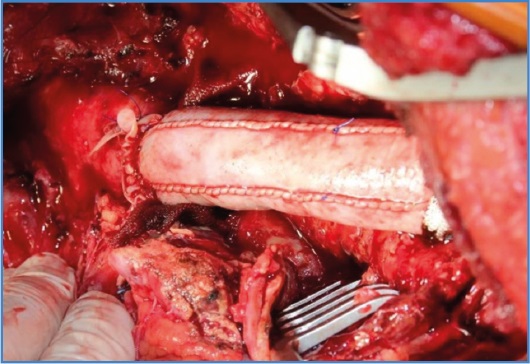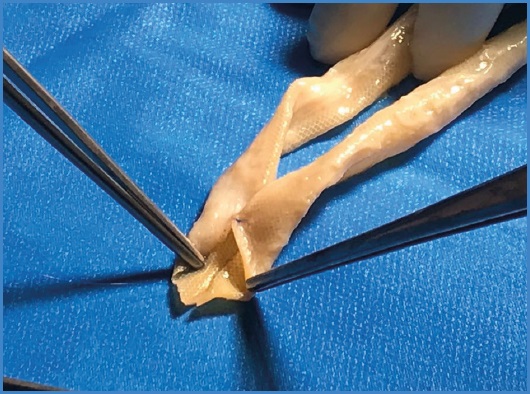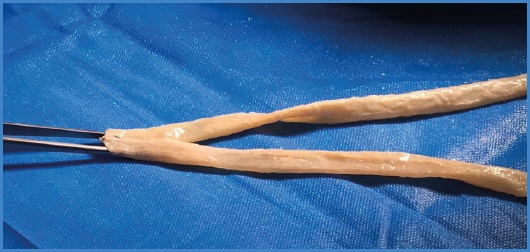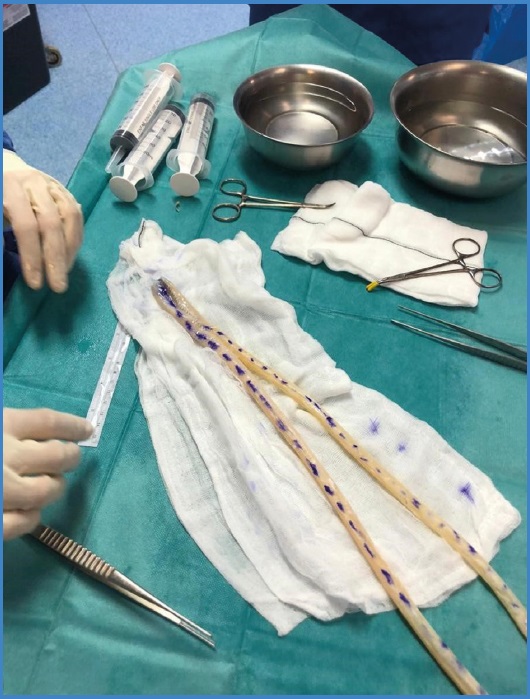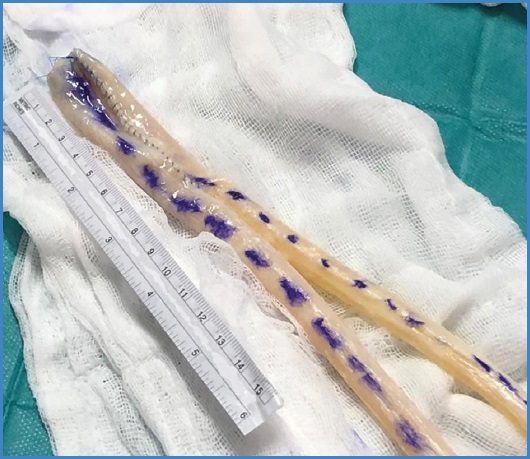My SciELO
Services on Demand
Journal
Article
Indicators
-
 Cited by SciELO
Cited by SciELO -
 Access statistics
Access statistics
Related links
-
 Cited by Google
Cited by Google -
 Similars in
SciELO
Similars in
SciELO -
 Similars in Google
Similars in Google
Share
Angiología
On-line version ISSN 1695-2987Print version ISSN 0003-3170
Angiología vol.75 n.5 Madrid Sep./Oct. 2023 Epub Dec 11, 2023
https://dx.doi.org/10.20960/angiologia.00466
Technic Notes
Xenografts and bioprostheses for the management of aortic infections
2Angiology, Vascular and Endovascular Surgery Unit. Hospital Universitario 12 de Octubre. Madrid, Spain
The surgical treatment of aortic infections is extremely challenging for vascular surgeons. While revascularizations can be performed in situ or using extra-anatomic techniques with various materials (autologous deep veins, cryopreserved homografts, silver- or rifampicin-impregnated Dacron, etc.), these surgeries carry serious risks for the patient. One of the major challenges is the availability of suitable substitute materials, especially regarding in situ aortic reconstructions, which is the preferred modality if possible and when the degree of infection allows it.
Recently, experiences with the use of xenografts (bovine pericardial tubes or biosynthetic grafts like Omniflow) have been published (1-3). In fact, they have been used by some surgical groups in our country with satisfactory results. In particular, the high infection resistance surrounding bovine pericardium along with its high patency and low re-intervention rates make it a good substitute material, although its application requires a second surgical team dedicated to the tubular preparation of the material.
A different alternative, in the case of arterial branch revascularization, is the use of the Omniflow graft that consists of a collagen matrix mounted on a polyester mesh. Although this material has also been proposed for contaminated areas, its in vitro bacterial resistance is no stranger to colonizations (4) even though it has shown good infection resistance.
This technical note illustrates the design of a bifurcated prosthesis with two Omniflow grafts for aortoiliac sector placement and is accompanied by some images to aid in its design (Figs. 1 -5), yet solid long-term results are still needed before recommending its general use.
REFERENCES
1. Keschenau PR, Gombert A, Barbati ME, Jalaie H, Kalder J, Jacobs MJ, et al. Xenogeneic materials for the surgical treatment of aortic infections. J Thorac Dis 2021;13(5):3021-32. [ Links ]
2. Burghuber CK, Konzett S, Eilenberg W, Nanobachvili J, Funovics MA, Hofmann WJ, et al. Novel Prefabricated Bovine Pericardial Grafts as Alternate Conduit for Septic Aorto-Iliac Reconstruction. J Vasc Surg 2021;73(6):2123-31.e2. DOI: 10.1016/j.jvs.2020.11.028 [ Links ]
3. Betz T, Neuwerth D, Steinbauer M, Uhl C, Pfister K, Töpel I. Biosynthetic Vascular Graft: A Valuable Alternative to Traditional Replacement Materials for Treatment of Prosthetic Aortic Graft Infection?Scand J Surg 2019;108:291-6. DOI: 10.1177/1457496918816908 [ Links ]
4. Woźniak W, Kozińska A, Ciostek P, Sitkiewicz I. Susceptibility of Vascular Implants to Colonization in vitro by Staphylococcus aureus, Staphylococcus epidermidis, Enterococcus faecalis and Pseudomonas aeruginosa. Pol J Microbiol 2017;66:125-9. DOI: 10.5604/17331331.1235001 [ Links ]
Received: August 30, 2022; Accepted: August 30, 2022











 text in
text in 

